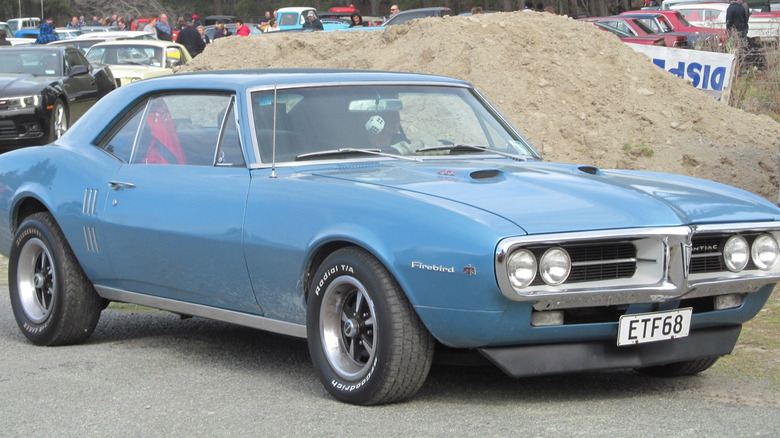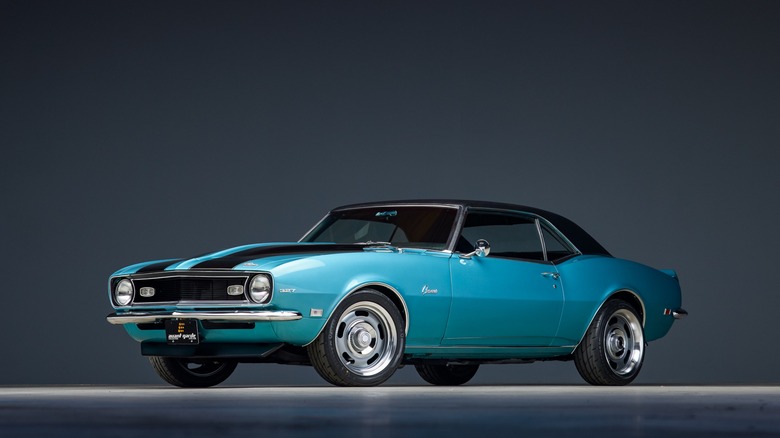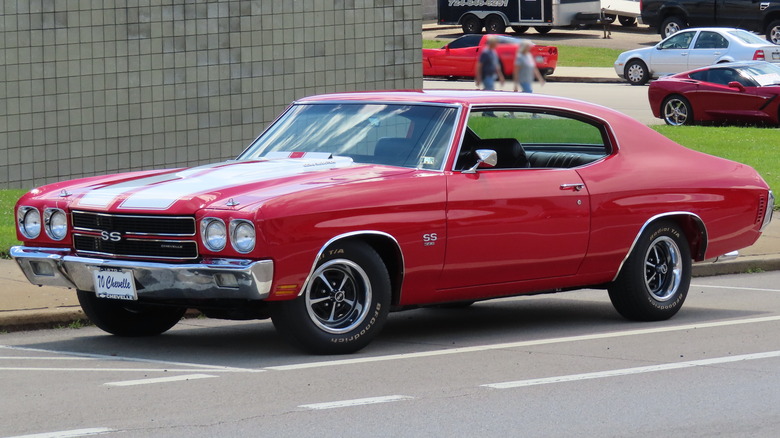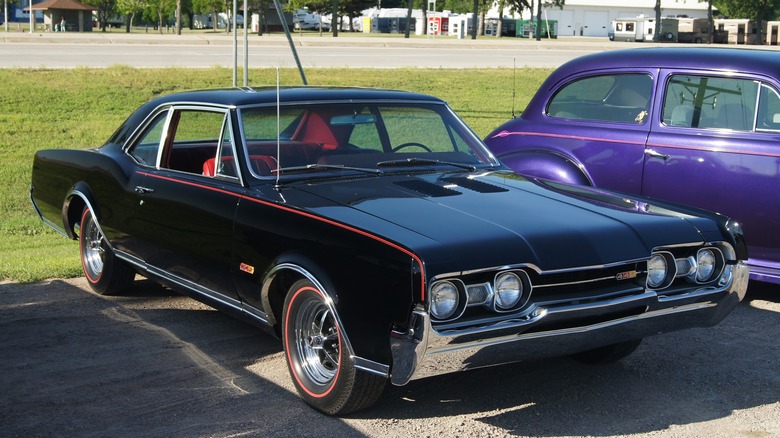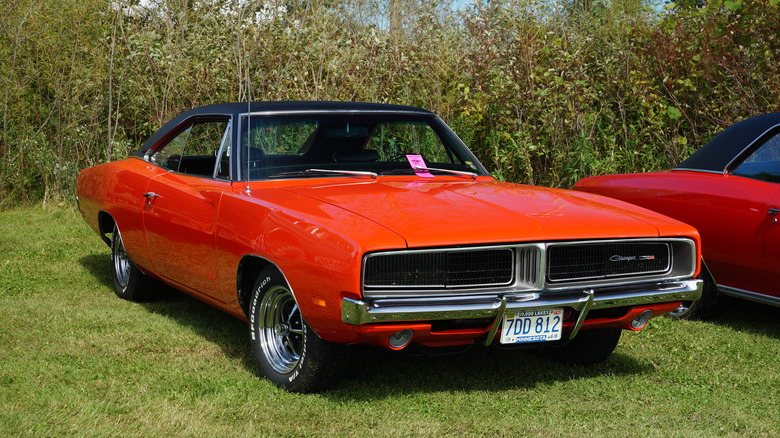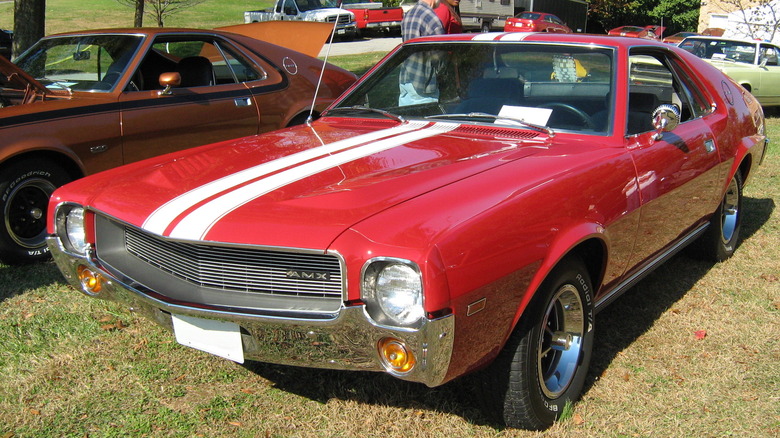5 Muscle Cars Like The Pontiac Firebird (And What They're Worth Today)
The Pontiac division of General Motors was established nearly a century ago, but GM's bankruptcy and reorganization forced the discontinuation of the brand in 2009. Pontiac's demise was hastened by the release of the Aztek SUV, which was the butt of many jokes about its quirky design that hid some forward-leaning features. In its last few years, Pontiac also produced the Solstice roadster, a model that had promise but is now worth less than it was when new. Two Pontiacs have appreciated quite a bit in value, though. The first is the 1964 GTO, a muscle car pioneer that originally sold for roughly $2,500-$2,800 but is now worth almost $60,000, according to sales data accumulated by Classic.com. The enigmatic but equally impressive 1967 Firebird has also appreciated significantly since its release. It had a base price of about $2,700 (roughly $26,000 today), but surviving examples in good condition now go for over $40,000, according to Classic.com.
The Firebird spawned a high-performance cousin, the Trans Am, which debuted in 1969. The Firebird was truly a product of its time, with a selection of powerful V8 engines and aggressive styling that made it look fast even when it was standing still. Until the oil crisis of 1973 and new emissions regulations that followed soon after slammed the brakes on the muscle and pony car market, other carmakers cranked out several models that had plenty in common with the Firebird.
Featured image by Riley via Wikimedia Commons|Cropped and scaled|CC-By 2.0]
The Camaro was Chevrolet's F-body Firebird brother
The Firebird and Chevy Camaro are so similar, they are often confused with each other. Both cars debuted as 1967 models, with the Camaro appearing about five months ahead of the Firebird. Generational updates for both F-body muscle cars came in 1970, 1982, and 1993. The Camaro has outlived the Firebird, which saw its 30-plus year run end in 2002. The Camaro nameplate took an eight-year break beginning that same year, but came back in 2010 before Chevy announced that the last sixth-gen Camaro would come in January 2024. The first-generation Firebird and Camaro are most similar in styling and performance, and both models spawned high-performance variants.
For the Firebird, that was the sporty Trans Am, which first appeared in 1969. The Camaro was issued in Super Sport (SS) and Z/28 versions over its long run, although both special models skipped a generation. The SS wasn't issued during the third generation from 1982 through 1992, while there has been no sixth-gen Z/28.
Classic Camaros vary widely in value by generation. Classic.com lists more than 2,500 sales of first-gen Camaros in the past five years, with an average price of just under $75,000. In that same period, fewer than 500 third-gen Camaros have changed hands, and for just a little over $21,000. The most valuable specimen is the rare 1969 COPO (Central Office Production Order) Camaro, which goes for more than $163,000 these days.
The Chevelle was another impressive Chevy model
The Firebird had another Chevy cousin that matched it in terms of performance and style, although the Chevelle had a shorter run and was built on the A-body platform. It debuted in 1964 alongside its three GM siblings: the Pontiac Tempest, Oldsmobile Cutlass, and Buick Skylark. The next year, the Chevelle Super Sport (SS) was issued with a 350-horsepower V8 engine, and that variant became a standalone model in 1966. All of the A-body models got a major redesign in 1968, and the following year the Chevelle SS reverted to an engine option only. The Chevelle was ultimately a casualty of the 1973 oil crisis and GM's need to consolidate its lineup, and was replaced by the Malibu in 1977.
Chevelles also vary in value based on generation. Classic.com shows a little more than 500 sales of first-generation Chevelles over the past five years at an average of about $61,000. More than twice that number of second-gen models have sold in that same span, for an average of a little over $76,000. Third-generation Chevelles are far less common, but paradoxically also much less valuable. Classic.com lists only 19 sales of 1973-77 Chevelles in the last five years, for an average price of just under $23,000.
[Featured image by MercurySable99 via Wikimedia Commons|Cropped and scaled|CC-By 4.0]
Oldsmobile 442
Oldsmobile introduced the 442 in 1964 as an option package on the Cutlass and F-85 in an attempt to jump into the emerging muscle car market. The name came from the configuration of a four-barrel carburetor, four-speed transmission, and dual exhausts sprouting from the V8 engine. For its second model year, the 442's motor was upgraded from 330 to 400 cubic inches, and the suspension and clutch were upgraded. The 1967 W-30 option package added a new air induction system, beefier springs, and chrome valve covers.
In 1972, the 442 went back to its original position as an option package for the Cutlass. Emerging emissions laws and the oil crisis robbed the 442 of some of its potency as the '70s progressed, although a 455 cubic inch big-block V8 was available in 1975.
The 442 officially lived through the 1991 model year, although the moniker was used by Oldsmobile insiders for the 1992 and 1993 Achieva SCX. The 1968-1972 second-generation 442 is the most coveted, with Classic.com noting an average sale price of nearly $70,000 for the 350 examples that have changed hands over the last five years. Only eight third-gen (1973-1977) models have sold in that same period, and all but one went for under $20,000. First-generation (1964-67) 442s fall squarely in the middle, with an average sale price of just under $43,000.
[Featured image by Greg Gjerdingen via Wikimedia Commons|Cropped and scaled|CC-By 2.0]
Dodge Charger
Moving out from beneath the GM umbrella takes us to another model that bore thematic and aesthetic similarities to the Firebird. Dodge introduced the Charger in 1966, putting a new fastback body on the Coronet platform. It could be had with one of several V8 engines, including a 426 cubic inch HEMI that put out an impressive 425 horsepower. The Charger 500 and Charger Daytona came along in 1969 and were so successful on the NASCAR circuit that both submodels were banned from racing. The HEMI option was dropped after 1971, and by 1975, changing sensibilities among American car buyers led Dodge to reconfigure the Charger with an emphasis on luxury instead of performance. The fifth generation that came along in 1981 was based on the middling Omni and offered neither performance nor luxury.
Dodge brought the nameplate back in 2006 as a muscle car to honor the earlier generations, which remain valuable today. Of those original Chargers, the 1968-70 second generation is the most highly coveted. Classic.com notes a little over 300 sales of those models in the past five years, at an average price of almost $138,000. The third generation (1971-74) is the next priciest at just under $57,000, and the 54 first-gen (1966 and 1967) examples that have sold since 2019 have gone for an average of about $41,500.
[Featured image by Greg Gjerdingen via Wikimedia Commons|Cropped and scaled|CC-By 2.0]
AMC AMX
American Motors produced its share of memorable but underrated muscle cars, including the AMX. That model debuted in 1968 as a shortened version of the Javelin that also ditched the rear seat. The 1968 AMX came with one of three V8 engines topped with a four-barrel carburetor. The largest of those was a 390 cubic inch version that produced 315 horsepower and 425 pound-feet of torque, thanks in part to its forged connecting rods and pistons. For 1969, the AMX used coil springs in front and got an updated dashboard to go along with some new paint schemes. A major upgrade to the suspension came in 1970, the AMX's last year as a standalone model. The next year, the badge was used as an option package on the four-seat Javelin.
Hagerty cites a production run of under 20,000 units for the two-seater AMX, but the current market doesn't reflect the model's relative scarcity. Classic.com has recorded 101 sales of 1968-70 AMXs in the past five years, for an average price of just over $41,000. The cheapest was a black example from 1969 that sold most recently for $12,750 and the most expensive was a 1969 Super Stock model in the red, white, and blue "Patriot-1" paint scheme that went for $181,500.
[Featured image by CZMarlin via Wikimedia Commons|Cropped and scaled|Public Domain]
